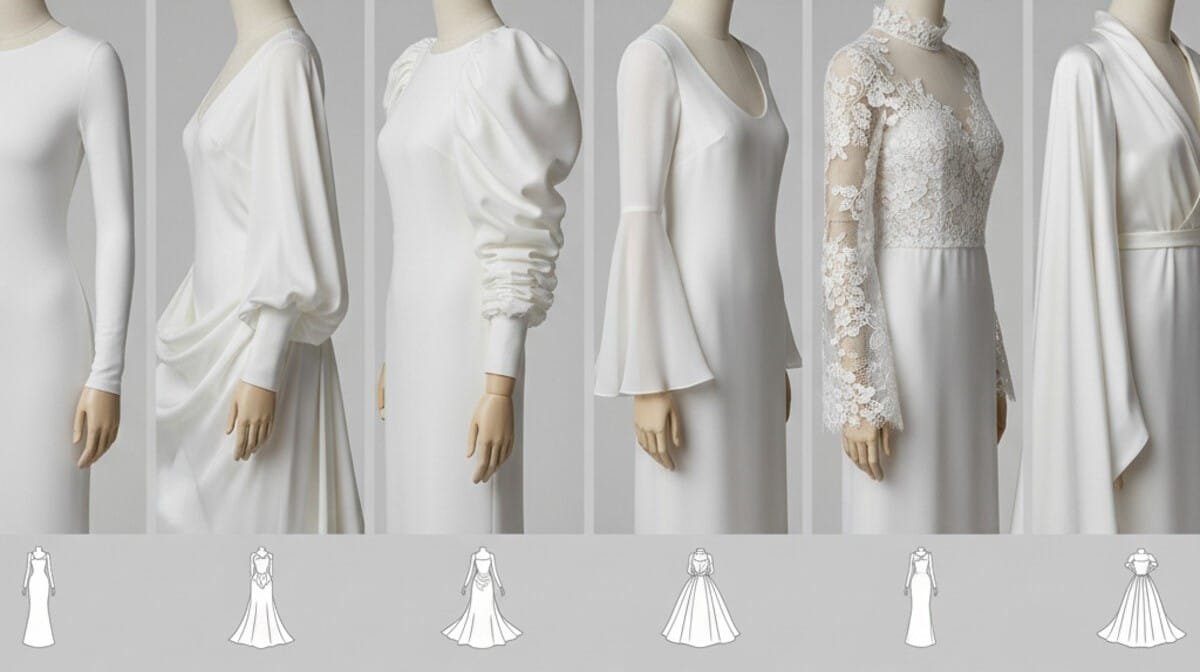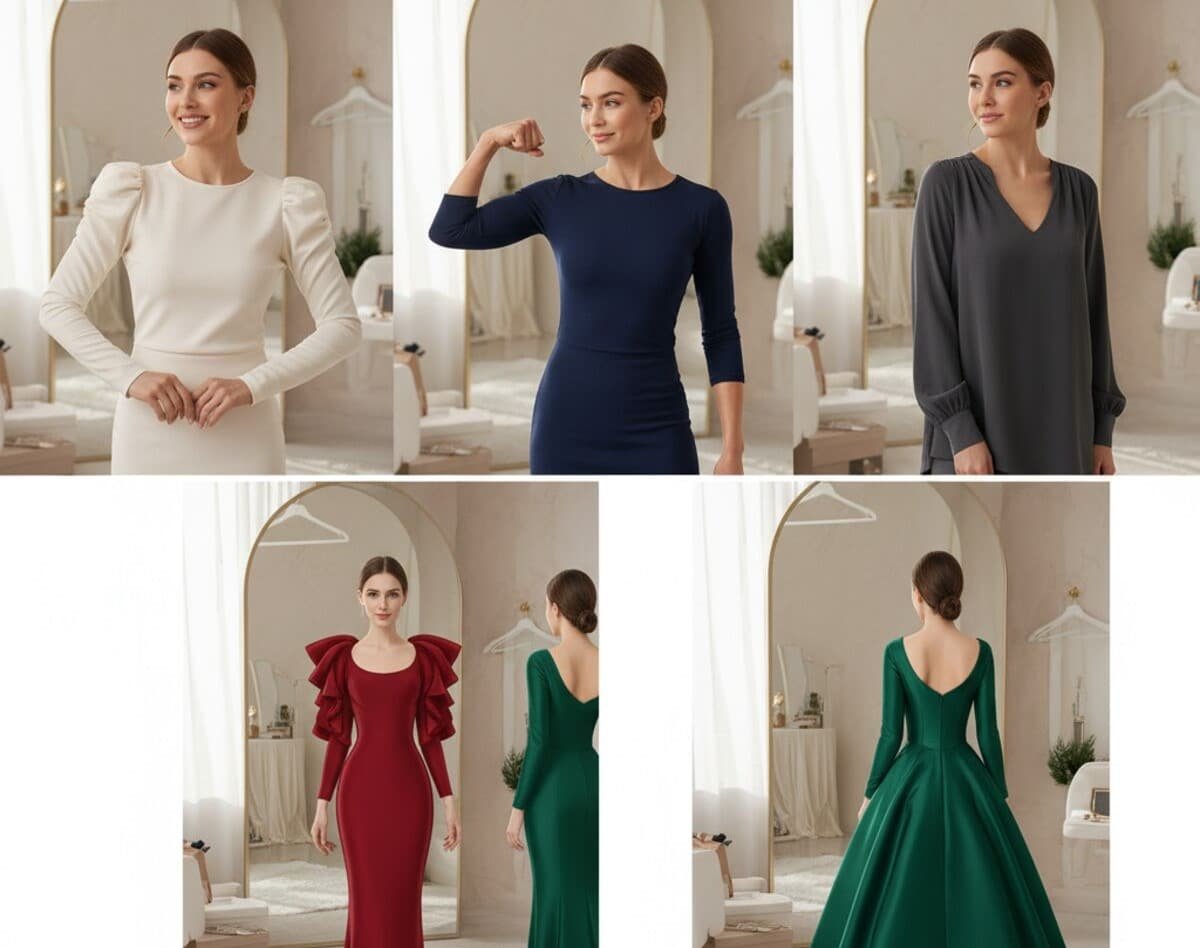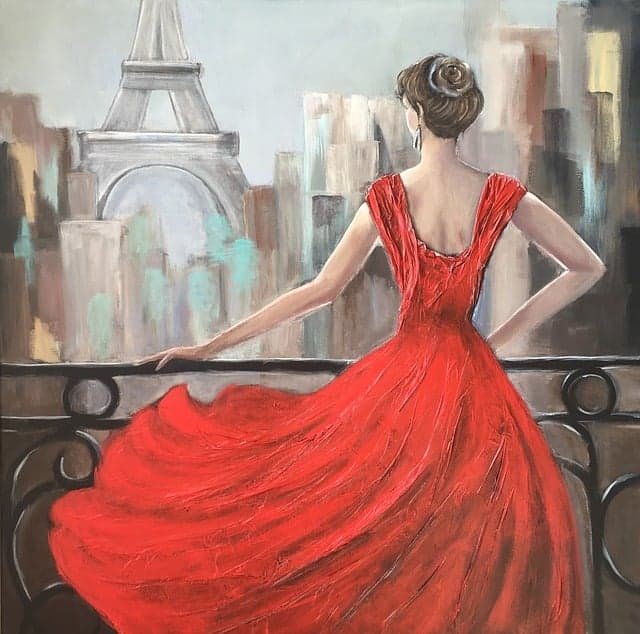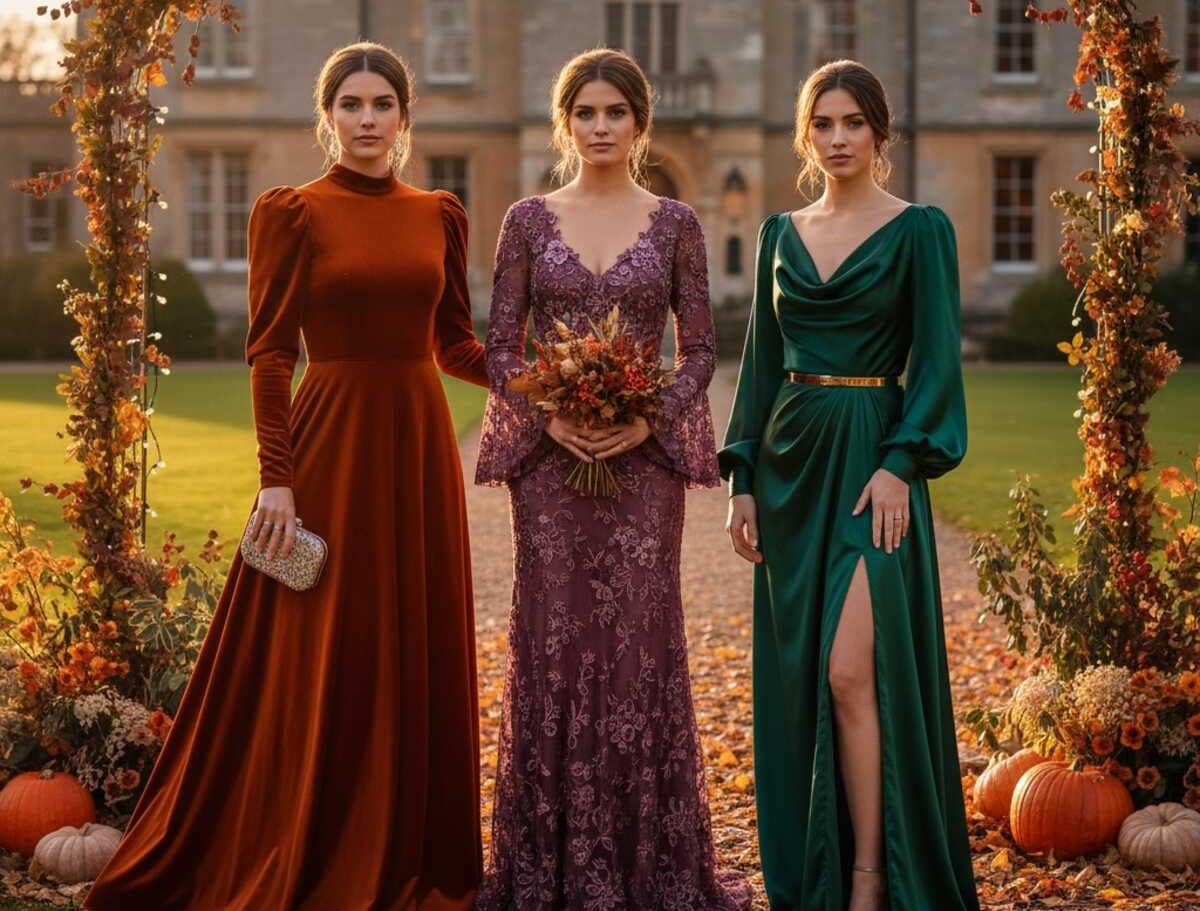When the air gets crisp and the invitations start to stack up, sleeves do more than keep you warm. They change the whole mood of a dress. A sleeve can make a gown feel modest or daring, modern or vintage, restrained or completely dramatic. If you’re thinking about what to wear to a fall formal, sleeves are an easy place to start — and, honestly, they often solve more problems than they create.
You might worry sleeves will feel stuffy or fussy. They don’t have to. The right fabric, cut, and length make sleeves into one of the best styling tools you own.
What makes sleeves great for fall formals
Think about the season: cooler evenings, richer colors, heavier fabrics. Sleeves naturally suit those textures. Long sleeves add a polished silhouette. Three-quarter sleeves make an outfit feel less formal but still intentional. Even a cap sleeve or flutter sleeve can balance a full skirt or heavy embellishment.
Sleeves also give you design options that a strapless dress simply can’t. Puff sleeves add romance. Bishop sleeves bring vintage flair. Illusion mesh sleeves let you wear a structured bodice without feeling exposed. Want drama? Statement sleeves — oversized, sculpted, or heavily embellished — do exactly that. Want subtlety? Slim, fitted sleeves in velvet or satin whisper elegance.
Fabrics and how they change the sleeve story
Different materials do different jobs. Satin and silk drape and gleam; they read as formal and smooth. Velvet has weight and a tactile luxury that feels unmistakably autumnal. Lace sleeves can be delicate or bold, depending on density and pattern. Tulle and mesh create a sense of airiness even when sleeves are long. Heavier knits or structured scuba fabrics offer architectural shapes and stay wrinkle-friendly through long nights.
Pick fabric with your event and comfort in mind. If you’ll be dancing, choose fabrics with a little give or easy movement. If the venue is outdoors or drafty, a slightly heavier fabric will keep you comfortable without looking bulky.
Sleeve shapes to know (and when to pick them)

- Fitted long sleeve — sleek, chic, ideal for minimalist gowns or when the skirt of your dress is detailed.
- Bishop sleeve — soft at the shoulder, billowy through the arm, cuffed at the wrist; it gives a poetic silhouette.
- Puff sleeve — youthful or couture, depending on size; great for balancing narrow hips and making a statement.
- Bell sleeve — graceful movement; nice with column or sheath shapes.
- Illusion sleeve — sheer mesh or lace; keeps a formal neckline modest while adding visual interest.
- Cape sleeve / kimono sleeve — more like drape than a traditional sleeve; excellent for formal drama without restricting movement.
Which one suits you? Consider your shoulders, arm comfort, and what you want to highlight. If you love your shoulders, a structured puff or cap sleeve will celebrate them. If you’d like a bit more coverage, a fitted long sleeve or bishop sleeve does the trick.
Color and texture choices that read like fall
Fall favors rich jewel tones and earthy neutrals. Think deep emerald, burgundy, navy, mocha, and charcoal. Metallic accents — bronze, antique gold — can heat up a darker palette. Texture matters too: matte velvet feels different from high-shine satin. If you’re drawn to patterns, subtle prints and autumnal florals can work, especially when sleeves are in a single, coordinating fabric to avoid busy visual noise.
Don’t be afraid of black. It’s classic, slimming, and often the easiest canvas for sleeve details to sing.
Practical formal dress with sleeves styling tips
- Fit the sleeve to move: sit, raise your arms, hug someone — try those positions before you commit.
- Layer smartly: a fitted bolero or shawl can complement a sleeved dress without clashing.
- Think wrists and hands: if the sleeve covers your wrist, choose bracelets that won’t bunch or a ring stack instead.
- Shoes and sleeves speak to balance: a heavy sleeve often looks best with a sleeker shoe; conversely, a simple sleeve can pair with a bolder heel.
- Undergarments matter more than you think: seamless, strapless, or convertible bras keep lines clean when sleeves create more shape elsewhere.
You’ll also want to account for climate. Indoor gala in a heated ballroom? Lighter fabrics are fine. Outdoor fall event at dusk? Aim for thermal comfort without looking like you’re wearing a sweater.
Dressing for your shape—small adjustments that change everything

You don’t need to follow every trend. Little tweaks often have the biggest payoff.
If you have narrow shoulders, choose sleeves that add a hint of volume at the shoulder to create proportion. If your arms are your favorite feature, fitted sleeves will show them off. If you prefer to minimize focus on your upper arms, opt for darker sleeve colors or slightly looser sleeve silhouettes that skim rather than cling.
Remember that silhouette is everything. A column dress with a dramatic sleeve looks intentional. A full-skirted gown with long, fitted sleeves reads classic. Try on combinations and give yourself a moment to feel how the whole look settles on you.
Accessorizing a sleeved formal dress
Necklines and sleeves are a partnership. If your dress has a high or detailed neckline, keep necklaces minimal or skip them. For lower necklines paired with sleeves, a statement necklace or earrings can balance the look. Clutches and wraps are the usual companions; choose textures that echo the dress (a velvet clutch with a velvet sleeve is a nice echo).
Hair influences sleeve perception too. An updo can let dramatic shoulders and sleeves breathe; loose waves often soften a sculptural sleeve.
Caring for your sleeved formal
Some sleeves — delicate lace, heavily beaded tulle — need gentle handling. Read care tags. Steam instead of ironing when possible, especially for heavier fabrics like velvet or embellished mesh. If you plan to rent, check the seam strength around cuffs and underarms; those are stress points after a night of movement.
Budget-friendly strategies
You don’t need couture to look pulled together. Explore rental services for designer pieces if you want a high-impact sleeve without the price tag. Mid-range retailers and independent boutiques often carry well-made sleeved dresses in seasonal colors. Tailoring is your best friend; a simple sleeve adjustment or cuff repositioning by a good seamstress can elevate an off-the-rack dress to custom territory.
Slight trend notes (because trends are sneaky)
Designers and brands this season are leaning into sleeves as a focal point — think statement shapes, corsetry paired with long sleeves, and more structured silhouettes overall. But timeless styles are still winning for real-life wear: fitted long sleeves and soft bishop sleeves keep showing up in seasonal roundups and shop collections. Trends will pass; a well-chosen sleeve will still look elegant next year.
Final thought
Choosing a fall formal dress with sleeves is less about following rules and more about picking what lets you move, feel confident, and enjoy the night. A sleeve can be armor and ornament at the same time. It can whisper modesty or shout glamour. It can be pragmatic when the venue is cold, and poetic when the music starts.
What will you try this season? A long velvet gown with slim sleeves? A playful puff-sleeve midi that makes you want to spin? Or maybe something sheer and unexpected?
Tell us what you choose — leave a comment below with your favorite sleeve style. We want to see how you interpret fall formals with sleeves.
Before you go, check these fall jacket trends for toddler girls that are built to last. And follow us on Facebook and Instagram for more fashion guides.
All images are AI generated.



